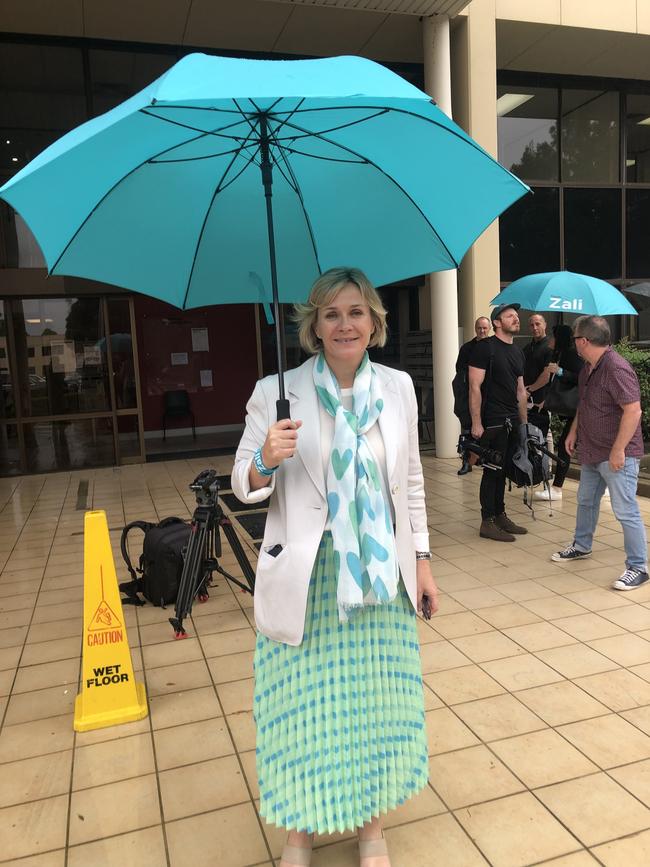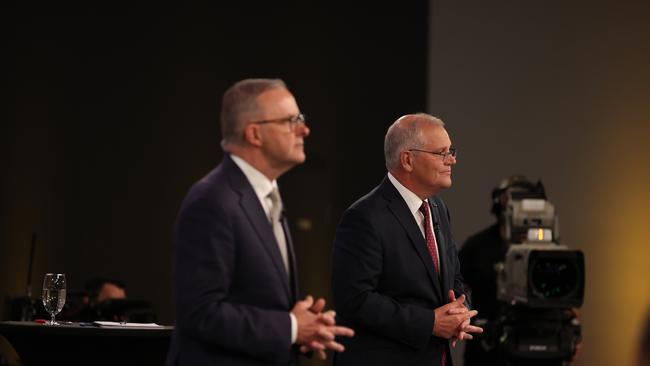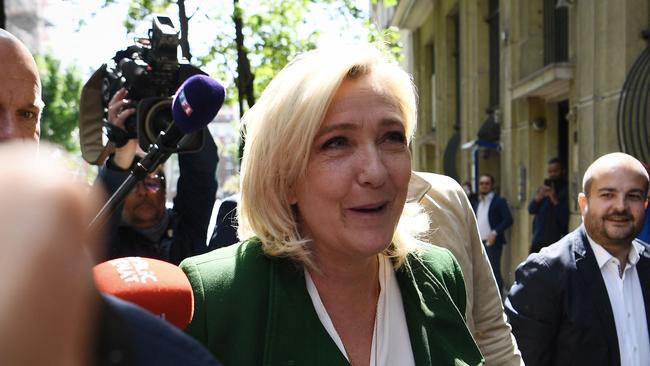
In betting markets, Labor has tightened as favourite to form government in the 47th parliament, now paying $1.62 in from $1.70 earlier this week to the Coalition $2.40, out from $2.10. The betting on a hung parliament has tightened, paying $2.25 in from $2.55 last week with either party forming a majority unchanged at $1.60.
But the individual seat betting shows Labor warm favourites to gain five Coalition held marginals, down from nine two weeks ago — Swan and Pearce in Western Australia, Boothby in South Australia, Reid in New South Wales, and Chisholm in Victoria. The markets for the other four Coalition held marginals – Robertson (NSW), Bass and Braddon (TAS) and Longman (QLD) have narrowed to show the Coalition either neck and neck or Labor a few cents in front.
There has been support for Liberal candidate in Gilmour, Andrew Constance who has come in from $2.40 to $2.00 to win the seat from Labor’s sitting member, Fiona Phillips ($1.75).
While the betting markets show Labor favourites to win the election, the individual seat betting indicates it will not win enough seats to form a majority government.
A net Labor gain of four seats would give them 72 in the new parliament, the Coalition 73. Those figures assume that both parties won’t lose seats to independents.
There are currently six crossbenchers. All will retain their seats. The two party aligned MHRs, Adam Bandt (AG) and Bob Katter (KAP) are locks. The other four are independents endorsed by the Climate 200 group, Rebecca Sharkie (Mayo, SA), Helen Haines (Indi VIC), Andrew Wilkie (Clark, TAS) and Zali Steggall (Warringah, NSW) and all will be re-elected by thumping margins.
One adviser close to the independents supported by the Climate 200 group, offered the usual caveats on punditry before claiming the group would see nine independents elected, a net gain of five. This bloke is not normally given to wild prognostications. Those gains would all come from Coalition seats, amid talk that Julie Bishop’s old seat of Curtin in Western Australia is now in play. A 13.9 percent swing would be required to unseat the sitting Liberal MP, Celia Hammond.
A loss of five blue ribbon seats would be catastrophic for the Liberal Party for all sorts of reasons. For what it’s worth, I think that prediction is too high but there is a strong likelihood that a further three or four Climate 200 independents will be elected to the parliament. Each seat won will come off the Coalition pile.
Labor has its problems, too. Kristina Keneally has a battle to win Fowler in Sydney’s southwest against an independent candidate not aligned to Climate 200, the Deputy Mayor of Fairfield City Council, Dai Le.

So, let’s keep the numbers simple. Assuming losses to what I like to call the Indy 200s, and a Labor loss to an independent, we have the Coalition at 70, and Labor at 72 and a hung parliament.
The question is, what would happen next?
There is an assumption that the Coalition or Labor must seek an agreement, a sort of alliance of convenience with enough of the crossbenchers that would enable one party or the other to have a working majority in the Lower House, but this is not necessarily true.
If, for example, the Coalition does find itself with 70 seats in the new parliament, Scott Morrison merely has to go to Yarralumla and inform the Governor-General that he believes he can form government and he would be sworn in as Prime Minister on that basis.
In the absence of an agreement between Labor and the crossbench, Scott Morrison would be Prime Minister and remain so until such a time as a motion of no confidence was successfully passed on the floor of the Lower House and that would require the support of at least four from the crossbenches.
While this might seem convoluted and based on a lot of assumptions, I believe the most likely outcome is that Scott Morrison will be Prime Minister once the dust has settled and the votes counted.
Obviously not a vote has been cast, let alone counted. The crossbench may remain at six after May 21. Even under those circumstances, a hung parliament is more likely than not.
One thing you can take to the bank is our electoral politics is changing rapidly and it is part of a global trend. It is not just that the major parties are on the nose and are finding less support among voters than ever before, although there is that. It is not just that independents enjoy less scrutiny, although that’s true. It is not just that minority governments have become the standard in western democracies, although that is the case, too.
What we are seeing is a fundamental shift in political affiliation and how it has flipped the old aphorisms of voting behaviour.

Look at the French Presidential election on Sunday. The media babbled about Marie Le Pen and invariably described her as a far-right candidate. There was furrowed brow shock at her better than expected 42-58 loss to Marcon which, by the way, polls showed was entirely anticipated. One thing overlooked was that in the first-round election, the candidates from Parti Socialiste and Les Republicains who had dominated French politics post-World War II, could barely muster five percent of the vote between them.
But look further at who supported Le Pen — unskilled and semi-skilled workers in the cities outside Paris and in the regions — the working class. The social progressive Emmanuel Macron was supported by the professional class. The great divide in French politics remains defined by identity and class but what had been understood about political affiliation has inverted.
It is the same trend that saw Trump elected in 2016 and Brexit get up by referendum in the UK.

We can weep and moan about the loss of dichotomic security that the two-party system brings to the table, but the fact remains the majors are the engineers of their own existential crises. They both appear unable or unwilling to adapt to changing behaviour. They both in large part ignore the will of the majority of their constituents. In the face of change, they have the turning circle of the Queen Mary, paralysed by factional conflict.
This will be the second successive federal election where rank and file members of the Liberal Party in New South Wales have been denied the chance to preselect candidates. Or is it the third? Meanwhile Labor parachutes candidates into western Sydney who would need GPS to find their electoral offices.
What drives the independents supported by Climate 200 and fills their coffers with donations is the professional class in Liberal blue-ribbon seats in Melbourne and Sydney; educated, wealthy people who have been ignored for decades. If Kristina Keneally gets the flick in Fowler, it will be the long ignored wishes of migrants and blue collar workers who do her in.
But forget the independents for a moment. Unless something extraordinary occurs between now and the election, there is a strong probability the people will deliver a hung parliament. At face value, it seems Labor can’t win enough seats to form a majority government, but the Coalition is set to lose a number of seats which will push it below the 76 seats required.
Crossbench numbers will swell, if not next month, then at the next election (which might also be held this year), and the one after that and so on.
Buckle up. It’s going to be a wild ride.








Talk to any political operative from either side of the divide, people from the large ensemble cast of advisers, lobbyists and apparatchiks that loiter around federal politics. The answer is the same. There is a firm belief that the federal election will result in a hung parliament.